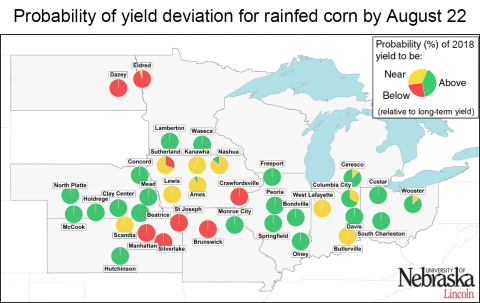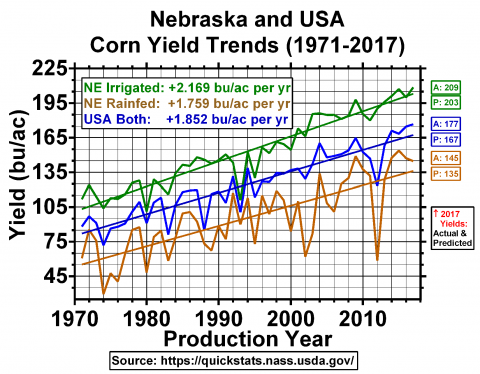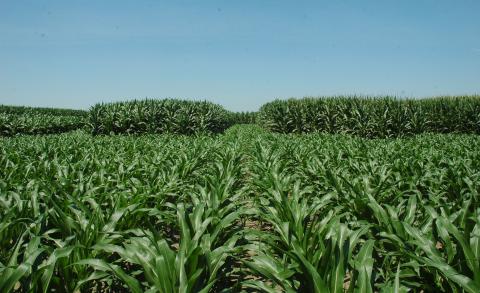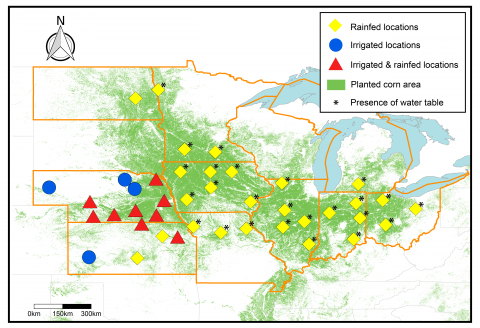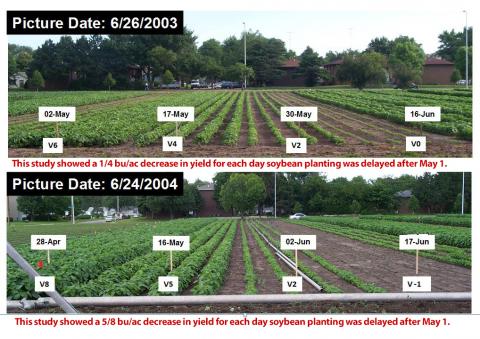Aug. 22 Corn Yield Forecast: Shorter Crop Cycle Did Not Lead to Below-Average Yield
August 23, 2018
Corn progress and yield forecasts for 41 sites across the Corn Belt indicate near- or above-average yields for most sites. High temperatures early in the season increased the rate of corn development and led to a shorter crop cycle, but do not appear to have diminished yields.
Soybean and Corn Yield and Acreage Trends
August 15, 2018
Nebraska soybean and corn yields have steadily increased from 1971 to 2017 in both irrigated and rainfed production systems. Nebraska irrigated soybean increased at a linear linear rate of 0.68 bu/ac, and irrigated corn increased at a rate of 2.17 bu/ac.
2018 Corn Yield Forecasts: Physiological Maturity Expected Before Historical Averages
August 2, 2018
Corn growth simulations across the Corn Belt indicate early corn maturity of one to two weeks for most sites. Simulated corn yields for rainfed and irrigated sites across the region near or above normal at most sites.
2018 Corn Yield Forecasts as of July 11: Higher Temperature Led To Faster Corn Development
July 13, 2018
Corn yield forecasts and crop growth stage estimates for the US Corn Belt, based on crop modeling and local input, start up this week for 2018. Corn development is well ahead of normal, with most sites in the central and southern fringes of the Corn Belt in the silking or grain-filling stages.
2018 Corn Yield Forecasts: Approach and Interpretation of Results
June 29, 2018
Here's how the Yield Forecasting Center will be developing corn yield forecasts for 41 locations across the Corn Belt during the 2018 crop season. Modeling, using Hybrid-Maize, weather data, and on-site verification help researchers estimate yields so growers can adjust management during the season, if necessary.
Is Soybean Yield Limited by Nitrogen Supply?
January 8, 2018
An article from the Proceedings of the 2018 Nebraska Extension Crop Production Clinics exploring research on whether nitrogen supply is limiting soybean yield.
Amplifying Positive Impacts of Early Soybean Planting
April 19, 2018
The benefits of planting soybean near May 1 are well documented. Now, what are the next steps growers can take to further expand on these benefits? Are different maturity groups warranted? What groups are typically being used in irrigated and rainfed environments in Nebraska?
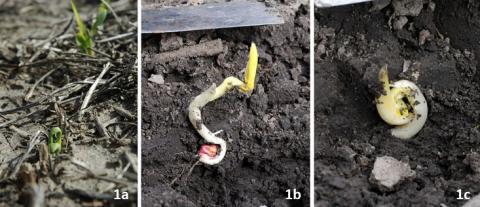
Cold Soil Temperature and Corn Planting Windows
April 12, 2018
With stormy conditions back in the picture, many growers may be concerned about planting corn into cold, wet soils? By checking weather forecasts and soil temperature at planting (in the field and online) and the cold tolerance of seed, growers can identify 48-hour windows of opportunity for planting.

